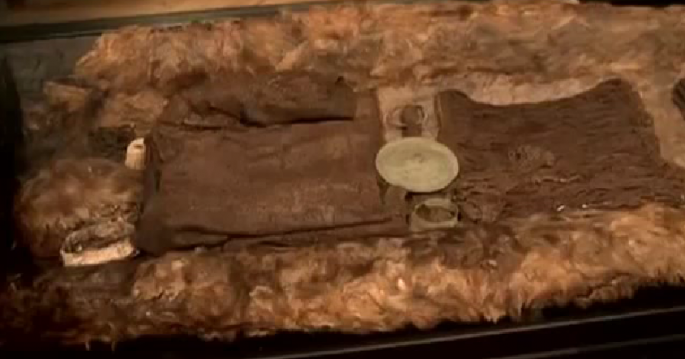Researchers from Denmark suggest that the unearthed Bronze Age burial of a girl in Egtved, Sweden in 1921 may not have been born in Denmark.
Using strontium analysis, an element found in bedrock throughout the world, researchers believe that the “Egtved Girl” likely traveled hundreds of kilometers and was born somewhere in Germany. It says that she spent long trips in the last two years of her life.
“Egtved Girl” believed to be 16- to 18-years old. She wore a shirt with elbow-length sleeves, a wool skirt, and a belt with a large bronze disk. The slim girl was 160 cm tall (about 5 ft 3 in), had short, blond hair and well-trimmed nails; her remains were found alongside the cremated remains of a child in a barrow, buried in 1370 BC.
“I have [analyzed] the strontium isotopic signatures of the enamel from one of the Egtved Girl’s first molars, which was fully formed/crystallized when she was three or four years old, and the analysis tells us that she was born and lived her first years in a region that is geologically older than and different from the peninsula of Jutland in Denmark,” explained Karin Frei from the National Museum of Denmark and Centre for Textile Research at the University of Copenhagen.
Frei also found out that the girl had about 9 inches (23 centimeters) of hair at the longest point, and hair grows about 0.4 inches per month. This allowed the researchers to examine her last two years.
Because of her long distance trips, Frei believed that was likely traveling quickly by boat. They suggest that she probably died or got sick and eventually died right after she arrived to Egtved.
Figurines with spiral symbols associated with a Scandinavian sun cult from the girl’s dress suggest that she might have been a priestess of that cult, according to Discovery News.
The girl was likely born in the Black Forest in southern Germany, according to Science /AAAS. The study is consistent with previous research that Denmark and Germany had commercial connections all the way back in the Bronze Age.




























